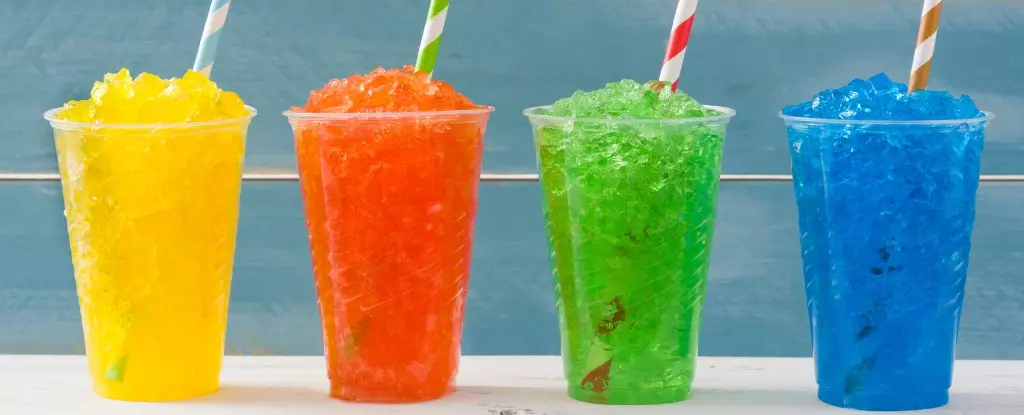Recent studies have unveiled alarming risks associated with slushy ice drinks containing glycerol, especially for children under the age of eight. While these vibrant, icy treats may seem harmless and enjoyable, the reality is far more concerning. Medical professionals and researchers in the UK and Ireland have highlighted a disturbing trend of hospitalizations that raises questions about the safety of these drinks. The particulars of these incidents paint a vivid picture of the potential dangers lurking in the seemingly innocent guise of colorful slushies.
The research analyzed the medical histories of 21 children aged two to seven who required emergency medical care after consuming slushies laden with glycerol. The findings revealed that many of these children experienced severe reactions within just an hour of consumption, exiting their worlds of play for frightening realities marked by loss of consciousness, high blood acidity, and critically low blood sugar levels. The study’s insights underscore the gravity of glycerol’s effects, with some children suffering seizures and requiring extensive medical evaluation, including brain scans.
The Glycerol Gimmick: Sweetener or Saboteur?
Glycerol is frequently marketed as a sweetener and an anti-freezing agent, yet its use raises important red flags, particularly in drinks targeted at young consumers. Though some slushy recipes utilize sugar instead to avoid the perils of glycerol, many manufacturers continue to prioritize cost-effectiveness and flavor enhancement over safety concerns. The average consumer may be blissfully unaware of the consequences tied to this ingredient, leading to potential health crises.
As families become increasingly cautious about sugar intake—especially in light of sugar taxes implemented across the UK and Ireland—glycerol might serve as a deceptive alternative that lacks rigorous public scrutiny. The juxtaposition of health awareness initiatives against unsafe products potentially creates a misleading narrative around what is “safe” for children to consume.
A Call to Action for Parents and Public Health Advocates
The findings from this research have prompted a clarion call for stronger public health messages. While food safety agencies have advised against slushy consumption for children aged four and under, the researchers argue that even this age cap is inadequate. They propose raising the age recommendation to protect younger children, emphasizing that parents and medical professionals need to remain vigilant regarding the effects of glycerol on children’s health.
Voices from the community have indicated a growing consensus around this precaution. Parents, like Elsa Qorri, share their concerns, recounting experiences where their children suffered discomfort after consuming slushy drinks. Such testimonials reinforce the urgency for clearer guidelines, stronger regulations, and increased public awareness about the hidden dangers that brand-value marketing often overshadows.
In this age of swift information dissemination, it is imperative for caregivers to be informed and proactive. The implications of ignoring these warnings could extend beyond mere discomfort, risking the health and safety of countless children. By fostering a culture of vigilance and awareness, we can ensure that tasty treats do not come at the cost of children’s well-being.

